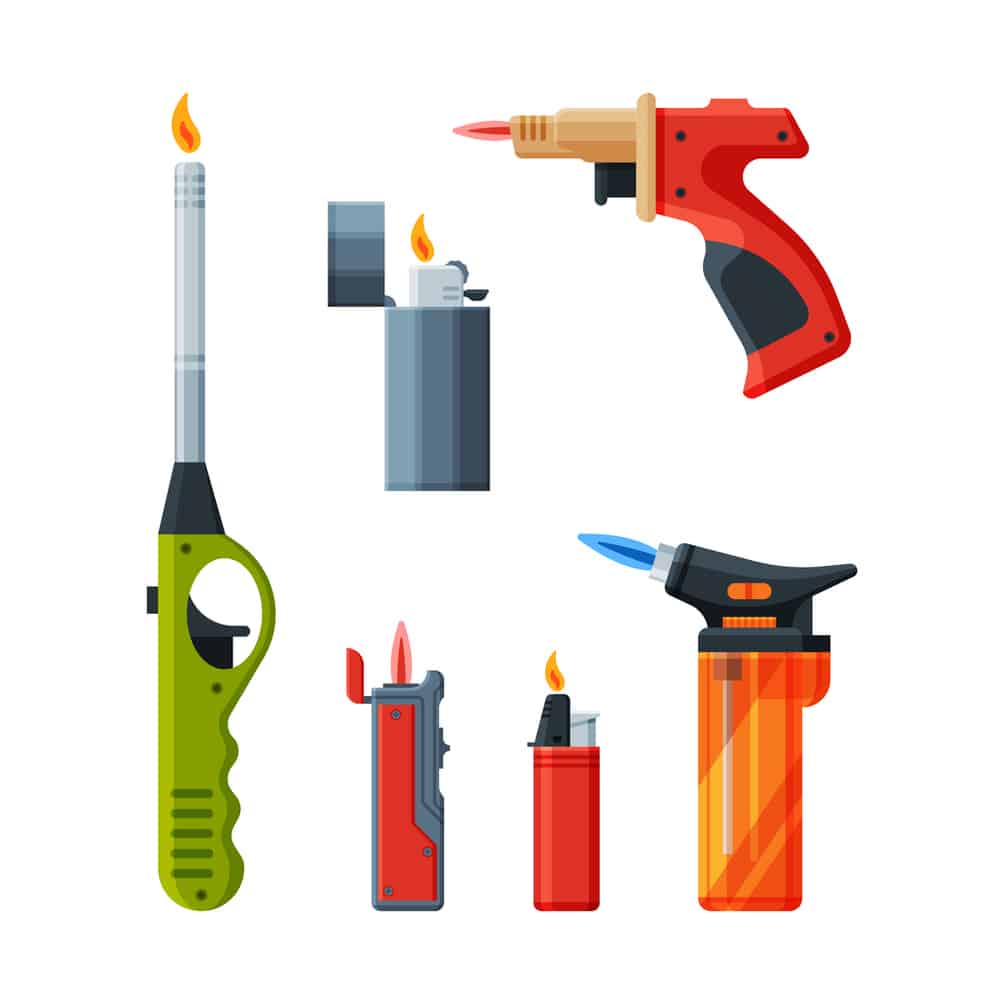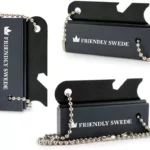
Refilling a butane lighter can be tricky without the right knowledge. Did you know fuel dilution inside your lighter may occur if the air is unintentionally injected during refilling? This blog post equips you with step-by-step instructions on how to refill butane lighters, effectively avoiding common issues such as unwanted air inclusion.
Table of Contents
- Video – How To Refill A Butane Lighter
- Tips and Safety Precautions
- Common Problems and Solutions
- Conclusion
- FAQ
- How do I prepare my lighter before refilling?
- What’s the correct way to position the butane can when refilling?
- Why does my lighter make a sputtering sound after refilling?
- How long should I wait after refilling before using my lighter?
- What type of butane should I use for my lighter?
- How can I tell when my lighter needs refilling?
- What’s the best way to clean a clogged lighter nozzle?
- Why does butane spray out when I’m refilling?
- How do I adjust the flame height after refilling?
- What’s the best environment for refilling my lighter?
- Why do I hear a hissing sound after refilling?
- How can I prevent fuel leaks when refilling?
Key Takeaways
- Purging the lighter before refilling is crucial to remove air and old fuel, ensuring efficient and safe refilling.
- Inject the butane by aligning the refill can’s stem with the lighter’s valve. Shake it beforehand for better fuel transfer. Press down firmly for about five seconds while keeping both items upside-down to prevent air inclusion.
- Test your lighter after refilling by igniting it. Adjust the flame gradually for optimal functionality. If difficulty igniting or inconsistent flammable production occurs, repeat purging and refilling steps to avoid air-diluting fuel within the lighter.
Video – How To Refill A Butane Lighter
To refill a butane lighter, purge the lighter by pressing the valve with a small tool until no hissing sound is heard. Next, insert the stem of the refill can into the valve and press down firmly for about 5 seconds to inject butane fuel into the lighter.
Finally, test the lighter by igniting it to ensure proper refilling.
Purging the lighter
Purging a butane lighter is an essential initial step in the refueling process. This removes lingering air and old fuel from the tank, allowing efficient and safe refilling.
To begin this portion of your refill journey, turn your flame adjustment wheel to its lowest setting – a critical move to ensure safety and prevent unwanted ignition. Next, utilize a small screwdriver or similar tool to press down on the filler valve, allowing existing air and any residual gas to escape.
You’ll know it’s successful when you hear a hissing sound as materials are released from the chamber. Be sure not to rush through this task: take time until no more hissing is heard before adding fresh butane into your emptied lighter compartment.
Injecting the butane
Injecting the butane into your lighter correctly is a key step in refilling. The action involves aligning the stem of your refill can with the refill valve on your butane lighter.
Make sure you shake the refill can before commencing, as this will facilitate better fuel transfer.
Once positioned correctly, press down firmly for approximately five seconds – a trick known to ensure an optimal refilling experience. It’s recommended that you perform this task with both items upside-down; this orientation prevents air from entering and diluting your fuel supply during refills, which could impact the lighter’s performance.
Follow these steps to refill a torch lighter with butane or any other type of butane lighter safely and efficiently.
Testing the lighter
In the final step of our butane lighter refilling process, we aim to ensure proper operation with a test. Initiating the ignition mechanism releases a steady flame if correctly filled – an immediate visual confirmation.
It’s essential to adjust your lighter’s flame adjustment wheel gradually towards increased settings until you reach optimal functionality, ensuring top-notch performance every time you ignite.
Take caution post-refill, as the strength of the first few flames may surprise! Remember that any difficulty in igniting or inconsistency in flame production might indicate air-diluting fuel within your lighter, necessitating another round of purging and refilling for optimal results.
Refilling butane lighters often gives them a new lease on life, making this easy maintenance task invaluable.
Check out our post: Which Survival Lighter Belongs in Your Bug Out Bag?
Tips and Safety Precautions
There are several important tips and safety precautions to remember to ensure a safe and successful butane lighter refill. First, always make sure the lighter is completely cool before attempting to refill it, as refilling a hot lighter can cause accidents or injuries.
Additionally, working in a well-ventilated area is crucial to avoid inhaling fumes during refilling.
When purging the lighter before refilling, be cautious of any residual flames or sparks that may ignite escaping gas. Remove any possible heat sources or open flames from your immediate surroundings to prevent accidental ignition while injecting the butane.
To avoid injury and ensure proper functioning after refilling, follow the manufacturer’s instructions regarding fuel capacity limits for your specific model. Overfilling can cause leaks or damage the internal mechanisms of the lighter.
It is also essential to use high-quality butane fuel designed explicitly for lighters. Substandard fuel may contain impurities or lower-quality ingredients that can clog valves or damage your lighter over time.
Lastly, take all necessary precautions when handling flammable materials such as butane. Store extra fuel cans securely in a cool place away from direct sunlight, and never use excessive force when activating the refill valve.
By following these tips and safety precautions, you can confidently refill your butane lighters without compromising your own safety or damaging your valuable equipment.
Common Problems and Solutions
Common problems that may arise when refilling a butane lighter include:
- Insufficient fuel: If the lighter does not produce a flame or the flame is weak, it may be due to insufficient fuel. To solve this problem, simply refill the lighter with butane, following the steps outlined in the previous section.
- Air bubbles in the fuel tank: During refilling, air bubbles can get trapped inside the fuel tank. This can cause inconsistent flame or difficulty igniting the lighter. To remove air bubbles, gently tap the bottom of the lighter on a hard surface to allow them to rise to the top. Then, release any excess gas by purging and refilling again to ensure a proper mix of fuel and air.
- Leaking butane: Leakage of butane from the refill valve can occur if it is not properly closed after refilling. To prevent leakage, make sure to close the valve securely and double-check for any signs of gas escaping before using the lighter.
- Clogged burner nozzle: Over time, debris or residue can accumulate on the burner nozzle, obstructing proper fuel flow and affecting ignition. To fix this issue, use a small pin or needle to clean out any clogs in the nozzle carefully. Be cautious not to damage or bend the nozzle in the process.
Check out our post: How To Start A Fire With Wet Wood
Conclusion
Refilling a butane lighter is a simple process that can be done in just a few steps. You can ensure a quick and efficient refill by properly purging the lighter, injecting the butane, and testing its functionality.
Remember to follow safety precautions and troubleshoot any common problems that may arise. With these tips in mind, you’ll be able to keep your butane lighters fully charged and ready for use without any hassle or complications.
You might also be interested in How To Start A Fire Without Matches
FAQ
How do I prepare my lighter before refilling?
Turn the flame adjustment to its lowest setting and ensure your lighter is completely cool. Press the refill valve with a small screwdriver until no hissing sound remains to remove old fuel and air.
What’s the correct way to position the butane can when refilling?
Hold both the lighter and butane can upside down. Align the can’s stem precisely with the refill valve, then press down firmly for about 5 seconds while maintaining the inverted position.
Why does my lighter make a sputtering sound after refilling?
A sputtering sound typically indicates trapped air bubbles in the fuel tank. Gently tap the bottom of your lighter on a hard surface to release the bubbles, then purge and refill again.
How long should I wait after refilling before using my lighter?
Allow your lighter to reach room temperature before attempting to use it. This ensures the butane has stabilized and prevents potential fuel overflow or irregular flame patterns.
What type of butane should I use for my lighter?
Choose only premium-grade butane fuel designed specifically for lighters. Lower-quality fuel contains impurities that can clog valves and affect performance.
How can I tell when my lighter needs refilling?
Your lighter needs refilling when you notice a significantly reduced flame height, inconsistent ignition, or if the flame extinguishes quickly after lighting.
What’s the best way to clean a clogged lighter nozzle?
Clean the burner nozzle when you notice an irregular flame. Use a fine pin to remove debris, being careful not to damage the nozzle.
Why does butane spray out when I’m refilling?
Butane spraying during refilling usually indicates poor alignment between the refill can’s stem and the lighter’s valve, or excessive pressure being applied. Ensure precise alignment and use controlled pressure.
How do I adjust the flame height after refilling?
Start with the flame adjustment wheel at its lowest setting. Gradually increase while testing until you achieve your desired height. Avoid setting the flame too high.
What’s the best environment for refilling my lighter?
Choose a well-ventilated area away from any open flames or heat sources. A stable surface at room temperature provides ideal conditions for refilling.
Why do I hear a hissing sound after refilling?
A hissing sound indicates a fuel leak or improperly sealed valve. Double-check the valve closure and inspect for any damage that might prevent proper sealing.
How can I prevent fuel leaks when refilling?
Ensure perfect alignment between the can’s nozzle and refill valve. Don’t overfill the tank, and always verify the valve is completely sealed after refilling.





















Leave a Reply